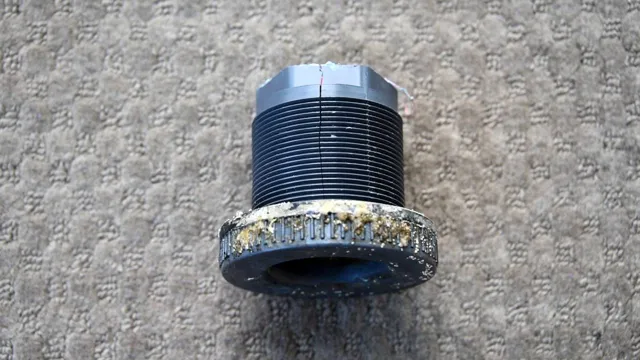As a new aquarium owner, it’s essential to understand how to properly install and maintain your aquatic environment to ensure the health and safety of your fish. One crucial aspect to consider is the tightness of the bulkheads on your aquarium. Bulkheads are essential components that allow water to flow into and out of the tank, and they need to be correctly installed to prevent leaks.
But, how tight should they be? Is it better to tighten them as much as possible or leave them with a little wiggle room? In this blog post, we’ll explore everything you need to know about the tightness of bulkheads on your aquarium, so you can ensure a stable and healthy environment for your aquatic pets.
Understanding Bulkheads
When it comes to installing bulkheads in your aquarium, one of the most common questions is, how tight should they be? The answer is, it depends on the type of bulkhead you have and the thickness of your aquarium glass. If you have a standard slip-fit bulkhead, it should be tightened until it’s snug. You don’t want to overtighten it, as this could crack your glass.
On the other hand, threaded bulkheads should be tightened until the gasket is slightly compressed, but not so tight that it deforms or damages the seal. As for the thickness of your aquarium glass, the general rule is that the rubber gasket of the bulkhead should sit flush against the glass, but not so tight that it crushes the gasket or damages the glass. Ultimately, the key is to use common sense and take your time when installing bulkheads.
Remember, it’s always better to err on the side of caution and tighten slowly rather than overtighten and risk damage to your aquarium.
Bulkhead 101: What They Are and Why They’re Important
Bulkheads are an essential component in marine engineering that serve to separate different compartments within a vessel and control the flow of water in the event of a hull breach. They are essentially watertight walls that help maintain the structural integrity of a ship, prevent capsizing, and protect passengers and cargo from flooding. Bulkheads can be made from a variety of materials such as steel, aluminum, and composite materials, and can be designed to withstand high pressure and collisions.
Think of them as the internal skeleton of a ship, providing support and stability. In short, bulkheads are critical in ensuring the safety and seaworthiness of ships, and are an indispensable feature of modern marine engineering.

How Bulkheads Work
Bulkheads are an essential part of shipbuilding, but what exactly are they and how do they work? In simple terms, a bulkhead is a vertical partition or wall inside a ship that separates different compartments. These compartments can serve different functions, such as storage, living quarters, or ballast. The use of bulkheads provides several benefits for a ship, including increased stability, isolation of damage in the event of a breach, and the ability to control the flooding of individual compartments.
This is especially important for vessels that are designed to operate in extreme conditions or that carry hazardous materials. Bulkheads can be made from a variety of materials, including steel, concrete, or wood, depending on their intended use and location within the ship. Overall, bulkheads play a crucial role in ensuring the safety and efficiency of a ship, and their proper design and maintenance are essential for safe operation on the open seas.
The Importance of Tightness
When it comes to the tightness of bulkheads on your aquarium, it’s vital to make sure they are as snug as possible. A loose fitting bulkhead can spell disaster for your fish and the overall health of the tank. Tight bulkheads ensure that water is properly contained within the tank without allowing any leaks or seepage to occur.
An improperly sealed aquarium can lead to water damage on your floors or walls, as well as a dangerous drop in water levels that could harm your fish. So how tight should bulkheads be on aquariums? Ideally, they should be tightened until they are snug, but not so tight that they cause damage to the tank or bulkhead threads. It’s important to make sure you’re using the correct size bulkhead and threading it correctly to ensure the perfect tightness. (See Also: How to Grow Banana Plant Aquarium: Beginner’s Guide to Successful Growth)
By doing so, you’ll promote a healthy and safe environment for your aquatic buddies to thrive in.
Why Tightness is Crucial for Bulkheads
When it comes to bulkheads, tightness is crucial. Effective bulkheads must be completely sealed to prevent moisture from getting in and potentially causing damage to cargo or the ship itself. This makes tightness an essential aspect of any bulkhead design.
Without proper sealing, even minor shifts in ship movement can result in the creation of gaps that allow moisture in, leading to corrosion and other issues. Additionally, tight bulkheads can help to prevent the spread of fire between different compartments of the ship. In essence, tightness is the key to ensuring that a ship and its cargo are protected from environmental factors and safety hazards.
Ultimately, this makes tightness one of the most important considerations when designing and maintaining any ship’s bulkheads.
What Happens When Bulkheads are Loose?
When it comes to marine engineering, the tightness of bulkheads is of utmost importance. Bulkheads are the walls that separate compartments in ships and maintain their structural integrity. Loose bulkheads can cause serious problems, leading to water damage, instability, and even sinking.
Additionally, loose bulkheads can compromise the safety of the crew members aboard, as they can break loose and cause serious injury or death. To ensure the safety and stability of a ship, it is crucial to regularly inspect and maintain bulkheads, ensuring that they are securely fastened and prevent any leaks or damage. So remember, a little tightening can go a long way in preventing catastrophic consequences at sea.
Determining the Right Amount of Tightness
When it comes to bulkheads in aquariums, determining the right amount of tightness is crucial for maintaining the health and safety of your aquatic pets. But how tight should bulkheads be on aquariums? Firstly, it is essential to understand that over-tightening the bulkheads can cause them to crack or break, leading to leaks and potential damage to your tank. On the other hand, a loose bulkhead can also compromise the tank’s integrity and eventual water spillage.
Therefore, it’s best to aim for a moderate level of tightness to ensure that the bulkhead forms a secure seal without being too tight or too loose. You could use Teflon tape or silicone sealant to help form a tight seal as needed while avoiding excessive tightening. Overall, your focus should be on ensuring the bulkhead seals securely without cracking or damaging the aquarium, rather than merely tightening it as far as possible.
Factors to Consider When Tightening Bulkheads
When it comes to tightening bulkheads, striking a balance between tightness and flexibility is crucial. Over-tightening your bulkheads can lead to unnecessary stress and structural damage, while under-tightening them can compromise the integrity of the vessel. The right amount of tightness will depend on several factors, including the material of the bulkhead, the type of sealant used, and the expected load that the vessel will carry. (See Also: How to Get Rid of Blue-Green Algae in Aquarium: Easy and Effective Solutions)
As a rule of thumb, it’s best to aim for a snug, secure fit that allows for a small amount of movement while withstanding any anticipated forces. Ultimately, proper tightening of bulkheads will contribute to the overall strength, durability, and safety of the vessel.
Measuring Tightness with a Torque Wrench
Measuring Tightness with a Torque Wrench When it comes to tightening bolts and nuts, determining the right amount of tightness can be challenging. Tighten it too much and you risk damaging the parts, while a loose connection can cause inefficiencies or, worse, safety hazards. That’s why using a torque wrench is essential.
A torque wrench allows you to tighten to a specific amount of torque, measured in foot-pounds or newton-meters, with accuracy and repeatability. It’s important to know the specifications for your particular application and set the wrench accordingly. Then, tighten in a slow, steady motion until the wrench audibly clicks indicating the desired tightness has been reached.
Remember, proper torque settings vary by component manufacturer and application, so always consult manufacturer guidelines. With the right amount of tightness, you can ensure that your connections stay secure and reliable.
Common Mistakes to Avoid when Tightening Bulkheads
When it comes to tightening bulkheads, one of the most critical mistakes that many people make is not determining the right amount of tightness. Over-tightening can cause damage to the structure and even lead to leakage, while under-tightening can result in a weak and unstable bulkhead that is prone to failure. The key to avoiding these problems is to strike the right balance between tightness and flexibility.
This starts with knowing the specific requirements of the bulkhead you are working on, as well as the material it is made of. Different materials require different levels of tension and torque, so it’s important to understand the nuances before starting the job. Another factor to keep in mind is that bulkheads are subject to expansion and contraction depending on the temperature and moisture levels.
So, it’s always a good idea to test the tightness of your bulkhead at different times of the day and different environmental conditions to ensure it remains secure. Remember, just like Goldilocks, you want your tightness to be “just right,” not too much and not too little!
Conclusion – Finding the Sweet Spot
In conclusion, the tightness of a bulkhead on an aquarium is crucial, but it’s all about finding that perfect balance. You don’t want it too loose, where you risk leaks and potential catastrophe for your aquatic friends. On the other hand, you don’t want it too tight, where you’re unnecessarily straining the material and causing potential damage.
So remember, aim for a snug fit, just like a comfortable pair of jeans – not too tight, not too loose, and everything will flow swimmingly!”
FAQs
What are bulkheads in aquariums?
Bulkheads are fittings or pipes that are installed through the walls of aquariums to regulate water flow.
(See Also: How to Make a White Aquarium Background for a Stunning Underwater Look)
Is it necessary to have tight bulkheads in aquariums?
Yes, it is important to have tight bulkheads in aquariums to prevent water leakage and maintain proper water flow.
How do I know if my bulkheads are tight enough?
You can check the tightness of your bulkheads by filling the aquarium with water and observing for any leaks or drips around the fittings.
What can cause bulkheads in aquariums to loosen?
Over time, bulkheads in aquariums can loosen due to vibrations from the equipment, temperature changes, or displacements caused by cleaning or moving the aquarium.
How can I ensure that my bulkheads stay tight in my aquarium?
You can use silicone sealant or Teflon tape to seal the threads of your bulkheads and prevent them from loosening. Regularly inspect and tighten the fittings if necessary.
Can tight bulkheads affect the water flow in my aquarium?
Yes, if your bulkheads are too tight, they can restrict the water flow and affect the filtration and oxygenation of the water in your aquarium. It is important to find the right balance of tightness.
How often should I replace my bulkheads in my aquarium?
Bulkheads in aquariums can last for several years, but they should be regularly inspected and replaced if they show signs of wear and tear, leaking, or other damages that can affect the overall health of your aquarium.







